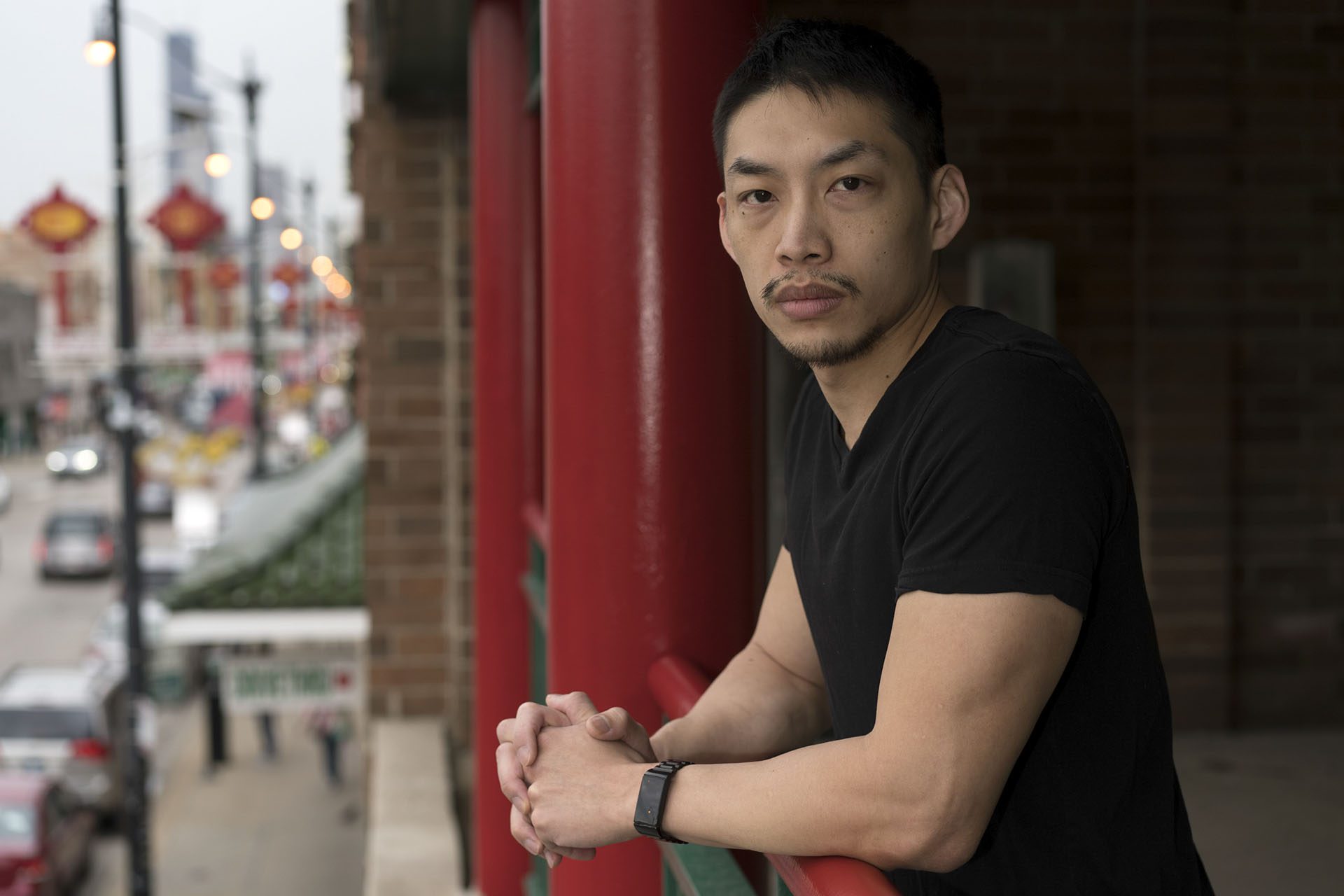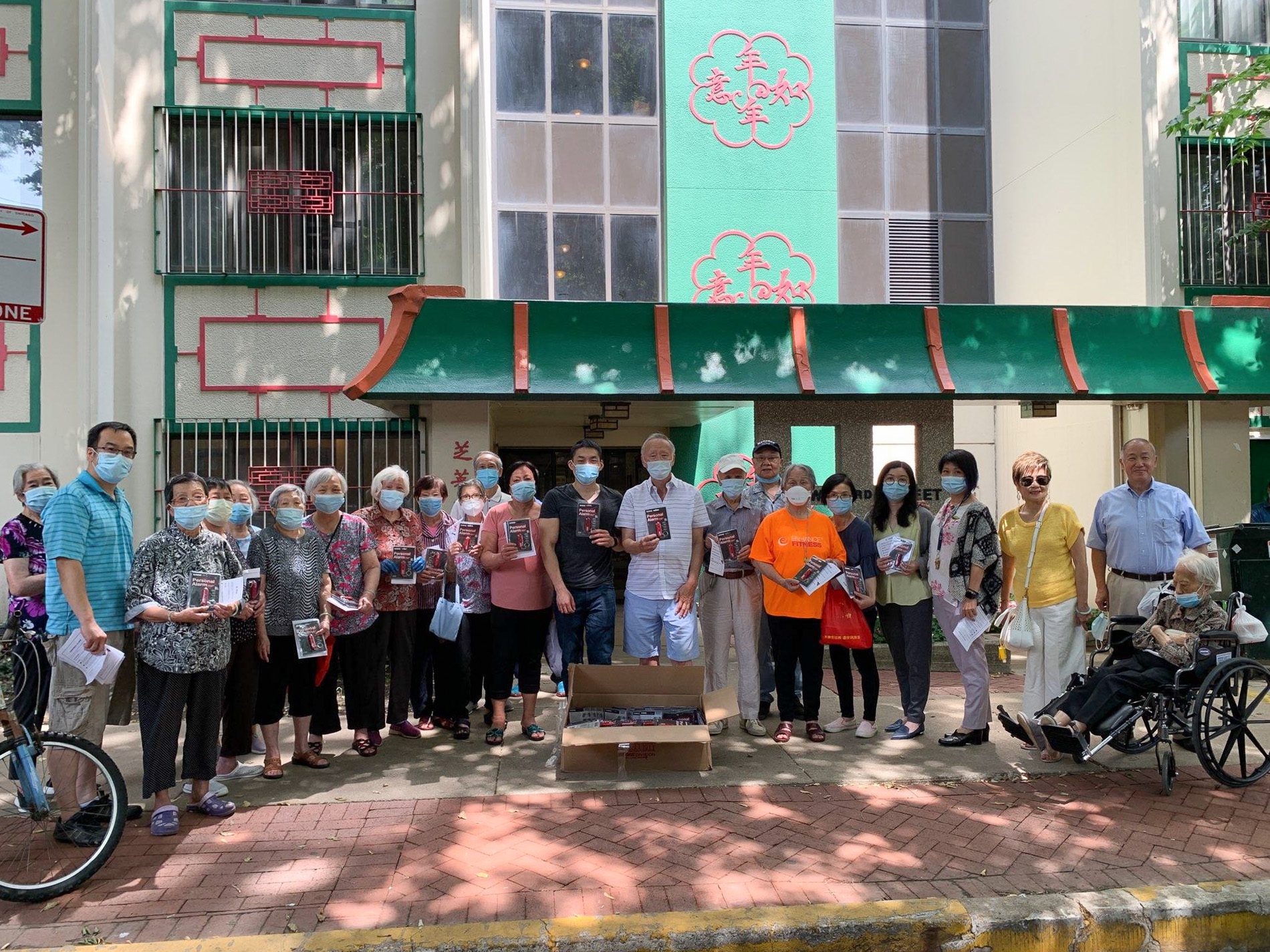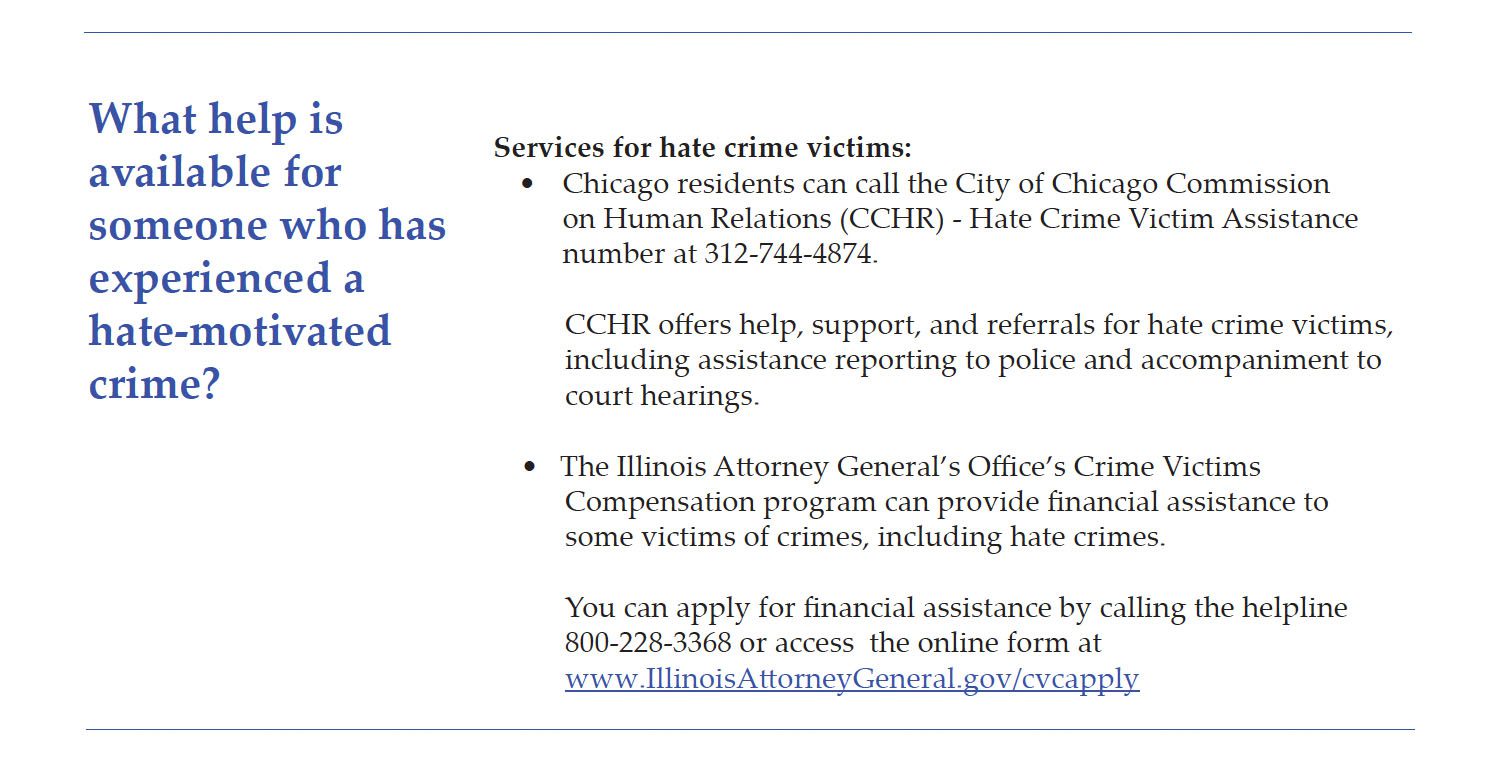 Youngrae Kim para Borderless Magazine
Youngrae Kim para Borderless MagazineAnte el aumento de la violencia contra los asiáticos, los grupos comunitarios están tomando medidas, desde la distribución de herramientas de autodefensa hasta la recopilación de datos fundamentales.
El verano de 2021 fue ajetreado para Kevin Chang, de 34 años. Mientras trabajaba como médico a tiempo completo, quería encontrar otras formas de proteger a la comunidad asiático-americana de Chicago en una época de creciente violencia antiasiática. A principios de abril, Jin Yut Lew, chino de 61 años y antiguo chef, fue encontrado robado en su coche, golpeado e inconsciente cerca de Chinatown. Este tipo de agresiones llevó a Chang y a sus cuatro compañeros a poner en marcha una Página GoFundMe en mayo. El objetivo era recaudar dinero para alarmas personales de llavero para distribuir entre los adultos mayores, un grupo demográfico que denunció 126 cuentas de acoso o asalto a nivel nacional entre marzo de 2020 y diciembre de 2021, según la coalición Stop al odio contra los AAPI.
La recaudación de fondos fue uno de los múltiples esfuerzos realizados en Estados Unidos, desde California a Nueva York, para empoderar a las comunidades asiáticas en medio de un aumento de la violencia antiasiática. Los esfuerzos comunitarios en Chicago incluyen la recopilación de datos, campañas de concienciación y la distribución de recursos para la autodefensa, como alarmas personales o sprays de pimienta.
Noticias que ponen el poder en el punto de mira y a las comunidades en el centro.
Suscríbase a nuestro boletín gratuito y reciba actualizaciones dos veces por semana.
Sólo en mayo, al menos tres incidentes han llevado a las autoridades a investigarlos como delitos de odio. En Tops supermercado en Buffaloun tirador en masa blanco mató a 10 negros. En Dallas, tres mujeres coreanas resultaron heridas durante un tiroteo en un peluquería en el barrio coreano de Dallas. Y en Laguna Woods, en el sur de California, un inmigrante chino objetivo una iglesia taiwanesa, matando a un feligrés e hiriendo a cinco ancianos.
Aunque los organizadores pretenden apoyar a los miembros de la comunidad, también quieren informar al público en general de que las agresiones siguen produciéndose independientemente de la atención que presten los medios de comunicación. Para muchos, la violencia no es nada nuevo. Refleja una larga historia de racismo estructural que se hizo más evidente con el aumento de la xenofobia durante la pandemia del COVID-19. Mientras que muchos funcionarios del gobierno han respondido al aumento de la violencia con una mayor vigilancia policial, muchos líderes de la comunidad asiática han rechazado esta estrategia, alegando mala conducta policial y abuso de poder. Una encuesta realizada el año pasado por el grupo de investigación AAPI Data también encontraron que los estadounidenses de origen asiático se encuentran entre los menos propensos a sentirse cómodos denunciando delitos motivados por el odio a las autoridades. Las barreras lingüísticas y la falta de estatus legal también pueden contribuir a esta incomodidad.
En respuesta a esta desconfianza en las soluciones sistémicas, activistas y académicos de grupos AAPI han tomado cartas en el asunto.
"Siento que sólo depende de nosotros", dijo Chang, que es chino. "El año pasado hubo como 30 o 60 días en los que recibimos mucha atención de grandes estrellas, pero a menos que seas asiático y sigas a ciertas personas de las noticias, ya no oyes hablar de esto últimamente".

Tras recaudar casi $4.000 para comprar 1.800 alarmas personales, Chang colaboró con grupos como la Asian American Law Enforcement Association para distribuirlas. Los voluntarios también repartieron folletos instructivos en idiomas como el mandarín, el mongol y el vietnamita. Entre las organizaciones beneficiarias se encontraban el South East Asian Center de Argyle, la Chinese Consolidated Benevolent Association of Chicago de Chinatown, la Chicago Mongolian Association y otros siete apartamentos de ancianos y centros comunitarios.
Tsegi Batmunkh, presidenta de la CMA, dijo que había dado prioridad a la instalación de las alarmas entre las mujeres que trabajan hasta tarde en restaurantes del centro de la ciudad y las conductoras de reparto.
"Muchos mongoles conducen Uber o Lyft y hacen muchas entregas para Uber Eats y dos personas fueron asaltadas y golpeadas mientras trabajaban", dijo Batmunkh, añadiendo que una tuvo que ser llevada de urgencia a Urgencias. "Pudieron escapar y sólo les dieron sus teléfonos, auriculares y otras cosas".
Estos incidentes ocurrieron en Chicago, pero la red de 20.000 miembros abarca también los suburbios de Illinois y estados vecinos como Wisconsin, Michigan e Indiana. Como presidenta, Batmunkh siente la responsabilidad de recordar a los miembros de su comunidad, mediante reuniones internas y mensajes en las redes sociales, que la seguridad es lo primero. "Si se te acercan para robarte, lo que quieran, entrégalo. Tu vida es más importante", afirmó.
Estos delitos no se denuncian, afirma Batmunkh, aunque no es capaz de explicar por qué. Pero para Jordan Stalker, asesor de investigación del South Asian American Policy & Research Institute, parte de la razón se debe claramente a las barreras lingüísticas.
Más información
"Miramos los formularios de denuncia de delitos de odio que están disponibles en la Oficina del Fiscal General y sólo están en mandarín y en inglés", dijo, añadiendo que las hojas informativas están disponibles en diferentes idiomas, pero el acceso a ellas es inconsistente. "Si tu nivel de comodidad con la lengua inglesa no llega a un nivel en el que puedas pedir un formulario de denuncia o rellenarlo correctamente, entonces no lo vas a hacer".
En marzo de 2021, SAAPRI lanzó una encuesta para recoger las experiencias de delitos motivados por el odio de personas de ascendencia sudasiática mayores de 18 años. El principal objetivo del proyecto es reducir la violencia motivada por el odio que sufren los estadounidenses del sur de Asia en la zona de Chicago y asegurarse de que sus historias se incluyen en conversaciones más amplias sobre el odio contra los asiáticos, que a menudo se centran en los asiáticos orientales.
"Queremos abogar por formularios de denuncia de delitos motivados por el odio que incluyan lenguas sudasiáticas como el punjabí y el gujarati", afirma Aakash Ray, investigador voluntario de SAAPRI.
Stalker añadió que algunas personas ni siquiera conocen los términos para identificar un delito motivado por el odio. "Si no sabes que has sido víctima de un delito de odio, no lo vas a denunciar como tal", dijo.

Además, no siempre está claro cómo denunciar los delitos motivados por el odio y qué recursos tiene la víctima. El Departamento de Policía de Chicago tiene un sistema de notificación en línea, pero como los delitos motivados por el odio no figuran entre los tipos de incidentes, las víctimas no pueden denunciarlos por Internet. En su lugar, debe acudir a uno de los 24 distritos policiales del departamento o llamar a la línea directa de no emergencias 311, solicitando al mismo tiempo asistencia lingüística si la necesita y está disponible. El CPD no respondió a las preguntas de Borderless sobre la denuncia de delitos motivados por el odio.
SAAPRI todavía está recopilando datos, pero ya ha observado que muchos de los delitos de odio denunciados son verbales, una tendencia que se alinea con los propios hallazgos de Stop AAPI Hate. De los 10.905 incidentes autodenunciados a la red nacional entre marzo de 2020 y diciembre de 2021, casi 7.000, o 63%fueron casos de acoso verbal.
Para Ray, estas cifras sugieren el inmenso reto al que se enfrenta la organización para combatir el odio antiasiático.
"Siento que entiendo mejor cómo funcionan estos problemas sistémicos. Puede ser fácil ver algo así y decir que alguien debería abordarlo, pero estas cuestiones tardan tanto en [resolverse]", dijo la joven de 22 años. "¿Cómo se detiene algo que no es tangible?".
Una iniciativa nacional pretende influir directamente en los responsables políticos para que atiendan mejor a la población AAPI. Investigadores del Proyecto de evaluación de necesidades AAPI COVID-19 están identificando y evaluando las necesidades de estas comunidades, específicamente durante la pandemia. Entre ellas figuran los servicios de salud mental y atención sanitaria que históricamente ha sido un reto para las comunidades asiático-americanas, especialmente inmigrantes o refugiados. Los investigadores encuestaron a 3.736 estadounidenses de origen asiático y a 1.262 hawaianos nativos/isleños del Pacífico y descubrieron que 75% de los encuestados estadounidenses de origen asiático creen que EE.UU. se ha vuelto más peligroso para su grupo racial o étnico. Cuatro de cada 10 encuestados experimentaron síntomas tras un suceso traumático por motivos raciales, desde ansiedad hasta hipervigilancia.
Para la Dra. Anne Saw, investigadora principal y profesora asociada de Psicología en la Universidad DePaul, el momento elegido para esta investigación es crucial.
"No podemos tomarnos un respiro porque en el momento en que lo hagamos, a la gente dejará de importarle", afirmó. "La gente está sufriendo de verdad y sentimos que somos responsables, así que este es nuestro momento para conseguir realmente que la gente escuche y abra sus corazones y sus presupuestos".
Tras terminar de recopilar datos para el proyecto, Saw, que es china, ha tenido tiempo de reflexionar sobre el impacto que tuvo en ella misma. Se dio cuenta de que hacer este trabajo era su forma de cuidar de la comunidad y de cuidarse a sí misma en un momento en que las cosas no parecían tener sentido.
"Es duro intentar dejar a un lado tus sentimientos personales, y no he sido capaz de hacerlo", dijo Saw. "De todos modos, no creo que hubiera sido beneficioso, porque parte de la razón por la que pudimos llevarlo a cabo es porque formamos parte de esas comunidades... porque nos preocupamos lo suficiente y sabíamos lo suficiente como para hacer las preguntas adecuadas".

